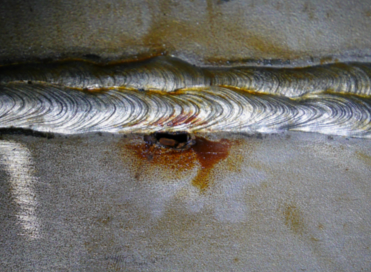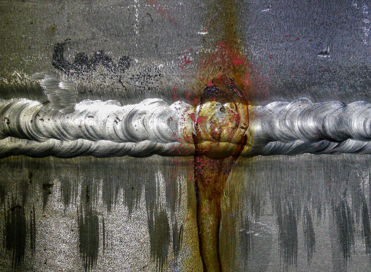Passivation
Are you seeing requirements calling for the passivation of stainless steels?
Stainless steels, even the least alloyed, will passivate immediately upon exposure to air. This is basic physical chemistry and the rapid oxidation of Chromium is the fundamental reason stainless steels are “stainless”.
 Typically the requirement arises relative to fabrication issues such as the removal of heat tint from welding or simple Iron contamination from forming and fabrication. Anything that remains on the surface of the stainless steel that can hinder the formation of the oxide film should be removed. This includes machining lubricants, grease, dirt, Iron contamination from accidental or planned contact and particulates from grinding.
Typically the requirement arises relative to fabrication issues such as the removal of heat tint from welding or simple Iron contamination from forming and fabrication. Anything that remains on the surface of the stainless steel that can hinder the formation of the oxide film should be removed. This includes machining lubricants, grease, dirt, Iron contamination from accidental or planned contact and particulates from grinding.
In the simplest case, cleaning the surface to remove oils and particulate is sufficient. Cleaning is facilitated by using a mild oxidising solution such as citric acid or dilute nitric acid. ASTM Specification A967 is a useful document for performing and evaluating passivation treatments. The citric acid based solutions are not typically strong enough to completely remove heat tint. Nitric acid is a stronger oxidant and is more effective at removing heat tint and free Iron. The use of nitric acid and other stronger chemicals for pickling are covered in ASTM Practice A380. These stronger solutions are necessary to remove the oxides and scales from a highly alloyed material such as AL-6XN® or ZERON® 100. Commercial pickling pastes are also effective in removing heat tint.
 Removal of the heavier oxides that are formed during annealing or other heat treating operations typically require one of the stronger solutions described in A380. The formation of these oxide scales (and to a lesser extent, heat tint from welding) can result in a slightly alloy depleted surface layer. This layer can be slightly less corrosion resistant than the base metal and for the most critical services it is important to properly pickle the metal surface then remove this depleted layer.
Removal of the heavier oxides that are formed during annealing or other heat treating operations typically require one of the stronger solutions described in A380. The formation of these oxide scales (and to a lesser extent, heat tint from welding) can result in a slightly alloy depleted surface layer. This layer can be slightly less corrosion resistant than the base metal and for the most critical services it is important to properly pickle the metal surface then remove this depleted layer.
There is an environmental handling advantage in using the milder citric acid based products. It may be desirable to use mechanical means to remove heat tint (i.e. grinding, polishing, shot blasting) and then use citric acid to remove free Iron and particulate. When using any acid or base to passivate and clean, the part should be thoroughly rinsed with potable water.
The Technical Association of the Pulp and Paper Industry (TAPPI) has an excellent publication that describes how to apply various pickling and passivating techniques depending on the type of equipment and service needs. It is named TIP 0402-35 and is available at the www.TAPPI.org website.
Technical support
Our team of metallurgists can provide you with any technical support that you may require. Please send your technical questions to [email protected]. Alternatively, if you’d like to find out more about our services, please visit our Technical Services page.
